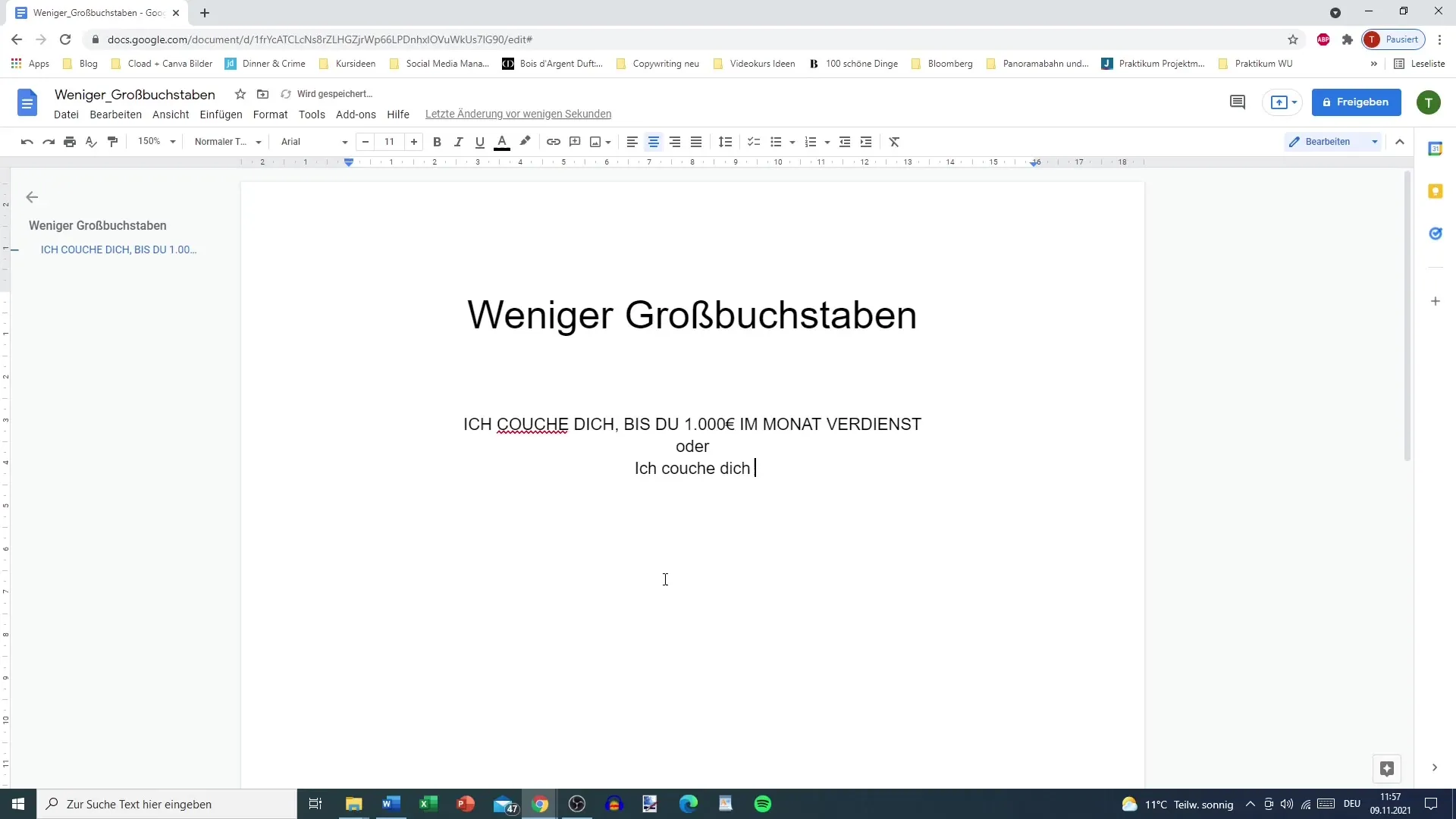Capital letters are often a tempting way to emphasize texts. Many people believe that by writing in capital letters, they can capture the attention of their readers. However, this approach can often do more harm than good. In this guide, you will learn why less is often more and how you can make your texts clearer and more engaging.
Key Insights
Capital letters can impair readability and create distractions. Instead, it is often more effective to only emphasize individual words or important phrases. Use bold text or other highlights to clearly highlight relevant information. Ensure that readers are not overwhelmed, but can clearly understand central messages.
Step-by-Step Guide
1. Understand the Effect of Capital Letters
The use of capital letters is often associated with emphasis and importance. Many people use them to reinforce their message. However, the opposite result can occur when the entire text is written in capital letters. Readability suffers significantly.
At first glance, a capitalized sentence like "I COACH YOU UNTIL YOU EARN 1000 € A MONTH" may seem appealing. However, it requires more effort and is less pleasant to read. A clear, simpler text is often the key.
2. Use Targeted Emphasizing
Instead of writing the entire sentence in capital letters, consider which information should really stand out. For example, the formulation "I coach you up to 1000 euros a month" could highlight the phrase "1000 euros" as this addresses the central question of your readers.

Through this targeted emphasis, you as a reader feel addressed, and the important message is conveyed more clearly. It is recommended to focus on a single word or relevant number.
3. Bold Text as an Alternative
Bold text is a great way to emphasize important points without setting the entire text in capital letters. Use this method skillfully to highlight key statements and calls-to-action (CTAs). For example, "Start now and earn 1000 euros!"
However, avoid marking too many words in bold. This can diminish the effect and lead to overwhelming readers. Select the relevant keywords strategically.
4. Vary Your Formatting
Combining different styles of font formatting can also be interesting. You can capitalize individual words or italicize them to create additional visual spaces. Be sure to use this sparingly so it doesn't look cluttered.
However, avoid writing every sentence completely in an outstanding font. This leads to readers having difficulty grasping the main message as all attention is directed to the formatting instead of the content.
5. Pay Attention to the Overall Length of Your Texts
Long texts with many capital letters can appear daunting and blurry. Keep your texts concise and clear. Reduce unnecessary words and focus on clear statements. This allows readers to better concentrate on the essentials.
Summary
In this guide, you have learned why it is beneficial to use fewer capital letters in your texts. Instead, you should highlight important information through targeted emphasizing and bold text. This improves readability and makes your message clearer.
Frequently Asked Questions
How do capital letters affect readability?Capital letters can significantly impair readability as they make reading more strenuous.
Can I still use capital letters?Capital letters should be used sparingly to emphasize important points; whole sentences should be avoided.
What are alternatives to capital letters?Bold text or the targeted highlighting of words are ideal alternatives.
How many words should I highlight in bold?Ideally, only a few key words or phrases should be highlighted in bold to stay focused.
Is there a rule for text length?Write texts as concisely as possible to keep readers' attention and deliver the message clearly.


